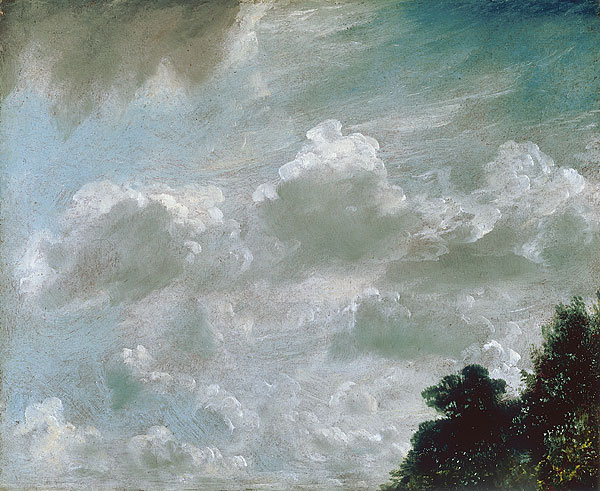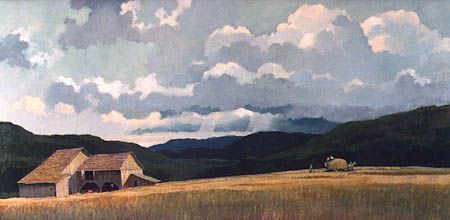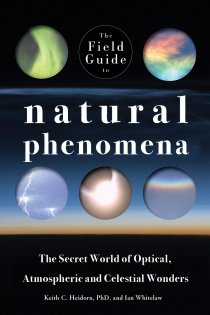 |
 |
| Home | Welcome | What's New | Site Map | Glossary | Book Store | Accolades | Email Us |
 | ||||||||||||||||||||||||||||||||||||||||||||||||||||||||||
Weather Almanac for July 2013SKYSCAPES: FROM BOTH SIDES NOWWhen Joni Mitchell penned those wonderful weather words in her song Both Sides Now “I've looked at clouds she had no idea the impact Canadian Astronaut Mark Hatfield would have on how we looked at the Earth from the looking down side. He tweeted: "Noctilucent Cloud - rare super high altitude cloud, barely visible from Earth, seen at dawn in the mesosphere from ISS." Hadfield said when he had glanced over the ocean and saw these clouds in the twilight, they looked like a “stained-glass, delicate-coloured painting.”  Noctilucent clouds over the Indian Ocean. Photo: Chris Hadfield/TwitterWith nearly a half century of manned space flight looking down at the clouded blue orb, and millions of camera-ready folk looking up from the ground and down from aircraft, our view of clouds has broadened dramatically from the first sky-focused landscapes of John Constable and the first downward looking skyscapes of Eric Sloane.  Skyscape: Cumulus Lines, Painting by Keith C. HeidornFor this midsummer entry in my Weather Almanac, I offer an essay looking at cloudscapes. It is a month in which we all should be outdoors looking at the skies and not sitting at computers reading about them. Please indulge my flight of vanity here as a number of the images are mine. My image choices for inclusion are based on no other criteria than my personal choices. Perhaps there have been better cloudscape artists or ones that came before, those featured but these caught my fancy. And I include my works as a learner who has used the process to see the sky better than I might have otherwise. To paraphrase Ted Wallace, from whom I took a recent painting workshop, it is the process not the product that is important. John ConstableWhile John Constable was not the first artist to paint the sky, he was one of the first to see it in a different light, by adding a scientific eye to his art. Influenced by Luke Howard’s cloud classifications, which became known during Constable's midlife, Constable often noted the weather conditions prevailing during his plein air painting sessions on the back of the canvas. It was said that later in life, he could reproduce a skyscape directly from his observational notes. Constable admitted in an 1821 letter, “I have done a good deal of skying”  Cloud Study Hampstead, trees at right (1821) by John ConstableConstable gave sky/cloud paintings a name when he coined the term skying to describe his artistic focus on clouds. His obsession with clouds was such that from 1820 to 1821 he produced a series of paintings and sketches numbering around 50 pieces.
Constable often placed the horizon line low on the canvas, opening more space for his skies. Constable gradually evolved his techniques in search of a perfect rendering of the more transient atmospheric effects, often laying in the paint with the palette knife to obtain great broadness and flatness of touch and the full purity of his pigments. Rather than portray skies as a stylized, flat, uniform background, he tried to capture the changing light and patterns of the clouds across the sky as they occurred; therefore, most studies were completed within an hour. (For more on the Constable style, see my article “Skying with John Constable”.) J.M.W. Turner and Caspar David FriedrichConstable's 18th Century contemporary J.M.W. Turner and Caspar David Friedrich were also influenced by the Howard classification and commentaries on it by Goethe. Though they took different approaches, both Turner and Friedrich had the sky as a prominent feature in many of their major works. Several of Turner's works today would be classified as abstracts, but in his day he was thought mad for such renditions. Turner's best works depicted natural phenomena such as sunlight, storm, rain, and fog. He developed new techniques to make skies and clouds look more luminous and expressive. The contemporary critic William Hazlitt noted that “Turner's 'pictures are...too much abstractions of aerial perspective, and representations not properly of the objects of nature as of the medium through which they are seen...they are pictures of the elements of air, earth and water.”
Caspar David Friedrich sought to combine the splendor of Nature with an inner contemplation, a spiritual connection to the subject. He said, “The artist should paint not only what he sees before him, but also what he sees within him.” His works often focused on expansive skies, raging storms, and gentle mists.
Frederic Edwin Church and Winslow HomerFrederic Edwin Church and Winslow Homer were both American-born painters during the Nineteenth Century with New England roots. Their works often included dramatic skyscapes even when not the focus of the painting. Prints of both artists hung in my dorm room during my undergraduate days at Michigan. Church was a member of the Hudson River School of American landscape painters. His topics sought to capture the vanishing American wilderness while imparting an appreciation for its natural beauty. Most are characterized by the lack of human figures and low horizontal lines to strengthen the power of the sky to enhance the wilderness feeling. His special technique luminism, a hallmark of the Hudson River School, emphasized the light in the scene and hid the brushstrokes which often diffused the lightness of an oil-painted image.
Homer began as an illustrator and lithographer but moved to oil and then watercolors in his artistic works. He is perhaps best known for his seascapes, but many of these involved dramatic skyscape elements. His breakthrough on landscape paintings came after living along the Maine coast where he developed his intimate knowledge of the sea.
Tom Thompson and The Group of SevenOften you see these Canadian painters referred to as The Group of Seven and Tom Thomson, but chronologically my order is more correct as Thomson had died before those in his painting fraternity formed The Group. Elsewhere, I have presented Thomson's work through the words of artist and meteorologist Phil Chadwick who considered him an observational meteorologists, for the sky detail in many of his works.
Not many of The Group's works were what I would consider true skyscapes, but weather often figured prominent in their paintings including West Wind by Thomson, Arthur Lismer's A September Gale, Georgian Bay and F.H. Varley's Stormy Weather, Georgian Bay.
Eric SloaneAlthough Eric Sloane may be the most “unknown” of the artists acknowledged here, he has had the greatest influence on my view of art and weather. Prints of his works have graced my walls and bookshelves for years. It is Sloane who has claimed to have “invented” the term skyscape.  Cloudscape by Eric SloaneSloane was one of the first artists to view the clouds from above. The famed flying pioneer Wiley Post taught him to fly in exchange for art lessons, and during his first flights with Post, Eric fell in love with the aerial view of sky and clouds that lay beneath him. "Some day, “Post told him, "a fellow will come along and paint nothing but the sky itself. Where else can you find higher mountains? Look at the cumulonimbus over yonder — twice the height of the Matterhorn and twice as beautiful. Where else but up here could you see a better landscape of clouds.” Sloane remembers replying: “What you mean is a cloudscape, and I wouldn't be surprised if the first fellow to try painting cloudscapes turns out to be me.” I have an extensive piece on Sloane elsewhere, so I will refer you there for more of his story. And Modestly...MeI don't consider myself even worthy of washing the brushes of the men introduced above, but in my eight years of painting, I have attempted to follow in their footsteps in looking to the skies for subjects. Whereas Sloane took up formal study to help him better understand clouds, and Constable read what was known scientifically of them in his day, I sometimes feel I am hindered by my scientific knowledge, trying to be too scientific and not artistic enough. Friends once suggested I needed to be more “painterly” and that is true.  Sea or Sky?, Painting by Keith C HeidornA few of my most atmospheric works are shown below. For more, see my gallery website. Those I most consider skyscapes are found here.  Winds Slow Trip Home, Painting by Keith C HeidornIn ClosingI finish this piece with a tribute to Tim Samaras, his son, and colleague who lost their lives in the powerful El Remo (OK) tornado in late May. Many owe their lives to those storm chasers like this trio who have dedicated their lives to chasing these storms --- either through early warnings given to local authorities or through bringing us better understand these deadly storms. May their lives be honored at least tenfold by those whom they saved. As I pointed out last month, the death rate from tornadoes has fallen dramatically over the last half century and that is in part due to such work. The painting below is one I did after the outbreaks of the last month or so.  Last Stand, Painting by Keith C HeidornIn the late 1960s, I too chased storms but only to get a better, unobstructed view of the magnificent cloudscapes presented by a line of large thunderstorms. At the time, few if any were actually chasing tornadoes. Since then I have contiued to photographically look at clouds from both sides, from up and down, as these two photos show.
Learn More From These Relevant Books
|
||||||||||||||||||||||||||||||||||||||||||||||||||||||||||
 |
Now AvailableThe Field Guide to Natural Phenomena: |
Now Available! Order Today! | |
 |
 |
Now |
The BC Weather Book: |

